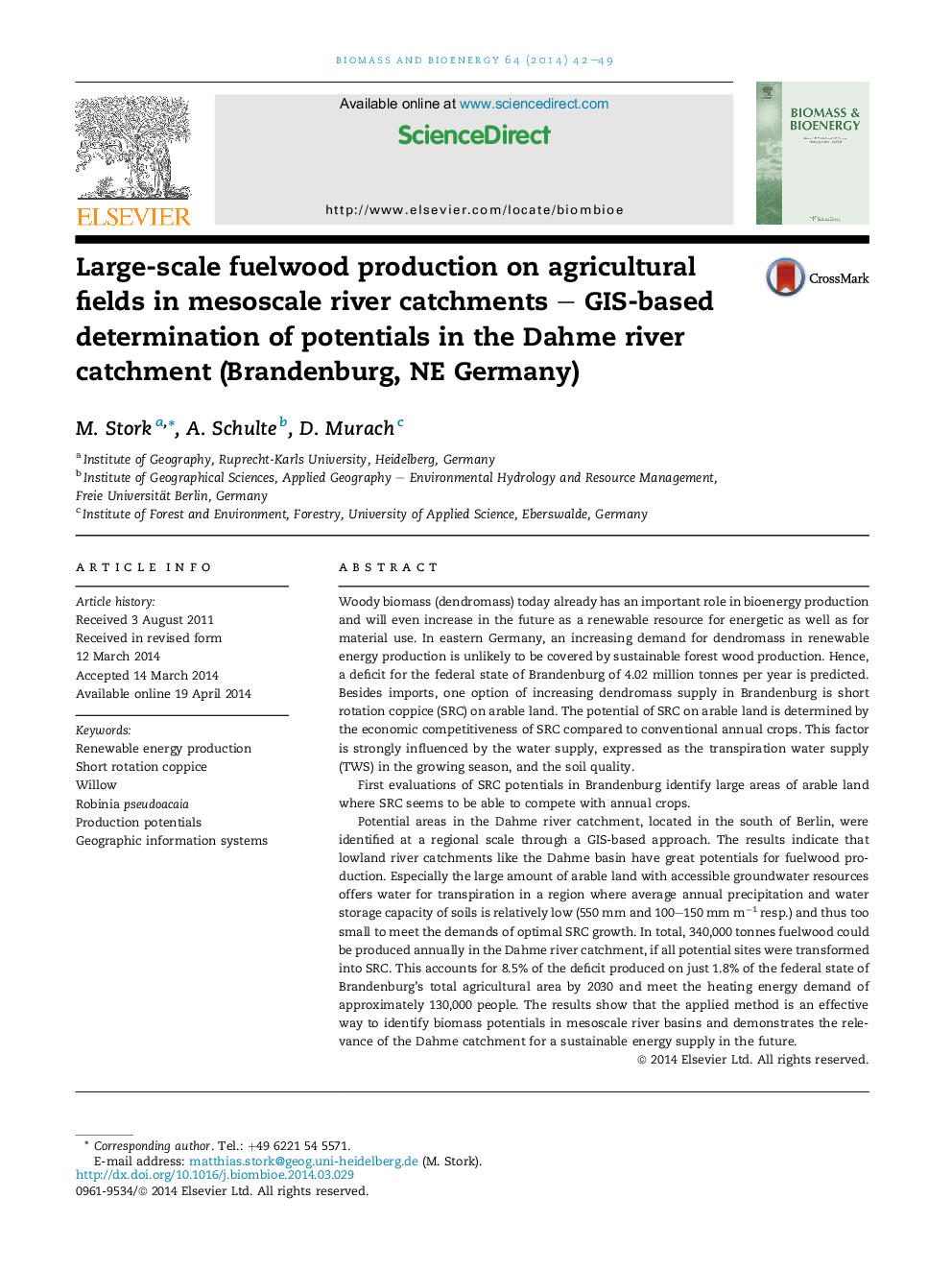| کد مقاله | کد نشریه | سال انتشار | مقاله انگلیسی | نسخه تمام متن |
|---|---|---|---|---|
| 676872 | 1459829 | 2014 | 8 صفحه PDF | دانلود رایگان |

• A deficit of fuelwood for Brandenburg State, Germany of about 4 million t(DM)y−1 is predicted by 2030.
• The Dahme river catchment may cover 8.5% of this deficit using 1.8% of the state's arable lands.
• Short rotation coppice resulted competitive with current conventional cultures.
• Applied method is an effective way to analyse potentials for SRC on the mesoscale.
Woody biomass (dendromass) today already has an important role in bioenergy production and will even increase in the future as a renewable resource for energetic as well as for material use. In eastern Germany, an increasing demand for dendromass in renewable energy production is unlikely to be covered by sustainable forest wood production. Hence, a deficit for the federal state of Brandenburg of 4.02 million tonnes per year is predicted. Besides imports, one option of increasing dendromass supply in Brandenburg is short rotation coppice (SRC) on arable land. The potential of SRC on arable land is determined by the economic competitiveness of SRC compared to conventional annual crops. This factor is strongly influenced by the water supply, expressed as the transpiration water supply (TWS) in the growing season, and the soil quality.First evaluations of SRC potentials in Brandenburg identify large areas of arable land where SRC seems to be able to compete with annual crops.Potential areas in the Dahme river catchment, located in the south of Berlin, were identified at a regional scale through a GIS-based approach. The results indicate that lowland river catchments like the Dahme basin have great potentials for fuelwood production. Especially the large amount of arable land with accessible groundwater resources offers water for transpiration in a region where average annual precipitation and water storage capacity of soils is relatively low (550 mm and 100–150 mm m−1 resp.) and thus too small to meet the demands of optimal SRC growth. In total, 340,000 tonnes fuelwood could be produced annually in the Dahme river catchment, if all potential sites were transformed into SRC. This accounts for 8.5% of the deficit produced on just 1.8% of the federal state of Brandenburg's total agricultural area by 2030 and meet the heating energy demand of approximately 130,000 people. The results show that the applied method is an effective way to identify biomass potentials in mesoscale river basins and demonstrates the relevance of the Dahme catchment for a sustainable energy supply in the future.
Journal: Biomass and Bioenergy - Volume 64, May 2014, Pages 42–49